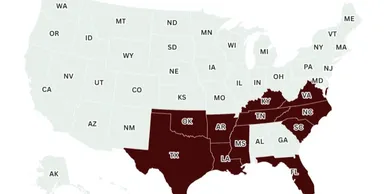Dangerously Hot Weather Triggers Heat Advisories Across Region
By: Ark-La-Tex Staff Writer
Published July 20, 2025
A wave of extreme summer heat swept across much of the southern United States this past week, prompting multiple agencies to issue heat advisories and warnings on Wednesday and Thursday. Meteorologists reported that daytime high temperatures soared into the triple digits in many areas, with heat index values, which account for humidity, exceeding 110°F in several cities, including Shreveport, Texarkana, and Monroe.
The National Weather Service (NWS) issued widespread advisories urging residents to avoid prolonged outdoor activity, remain indoors when possible, and take extra precautions to prevent heat-related illness. Officials emphasized the risk posed to young children, older adults, outdoor workers, and individuals with chronic medical conditions.
“Heat like this is not just uncomfortable, it can be life-threatening,” said meteorologist James Renner of the NWS office in Shreveport. “We strongly advise people to stay in air-conditioned spaces, drink plenty of water, and check on neighbors, especially the elderly and those who live alone.”
In response to the advisory, local governments activated emergency cooling measures. In Caddo and Bossier parishes, public libraries, recreation centers, and churches were opened as temporary cooling stations. Emergency services also increased patrols to respond quickly to heat-related distress calls, especially involving the homeless population.
Hospitals and urgent care centers in the region reported an uptick in cases of heat exhaustion and dehydration, with some facilities adding triage space to accommodate patients with heat-related symptoms.
Schools operating summer programs adjusted outdoor activities, with many canceling field trips, recess, or sports practices during the hottest hours of the day. Employers with outdoor labor forces, including construction and landscaping companies, shifted work schedules to the early morning and late evening to reduce risk to employees.
Power companies reported increased electricity usage as air conditioners ran continuously to combat the heat. Although the grid remained stable, utility providers urged residents to conserve energy where possible by raising thermostat settings a few degrees and avoiding heavy appliance use during peak hours.
Animal shelters and veterinarians also issued reminders to pet owners, warning that pavement temperatures can become dangerously hot for paws and that animals need access to shade and cool water throughout the day.
The heat wave was caused by a high-pressure system parked over the central U.S., a common pattern during mid-summer months. However, this event was notable for both its intensity and duration. Forecasters say the region could see only modest relief in the coming days, with slightly lower humidity and scattered storms expected by the weekend.
The Centers for Disease Control and Prevention (CDC) classifies extreme heat as one of the deadliest weather-related hazards in the U.S., often causing more fatalities each year than floods, hurricanes, or tornadoes.
Residents are encouraged to continue monitoring local forecasts, follow guidance from health and emergency officials, and remain proactive in protecting themselves and those around them during future periods of extreme heat.
For updates and safety resources, the public can visit the National Weather Service website or contact local emergency management offices.
by: Dr. Kirkpatrick Williams
